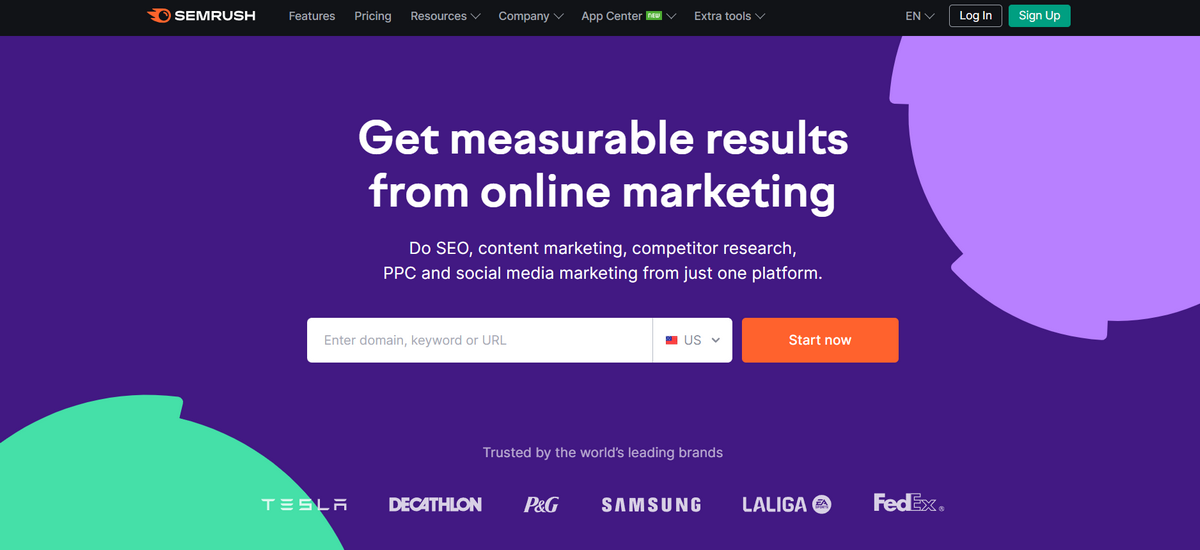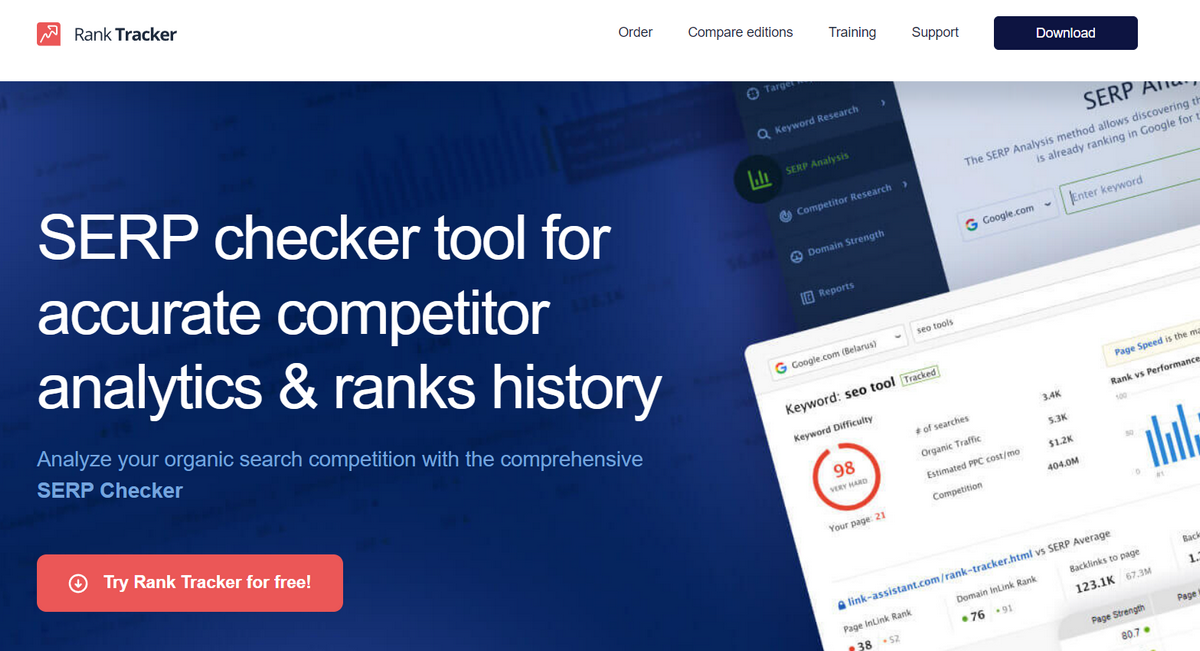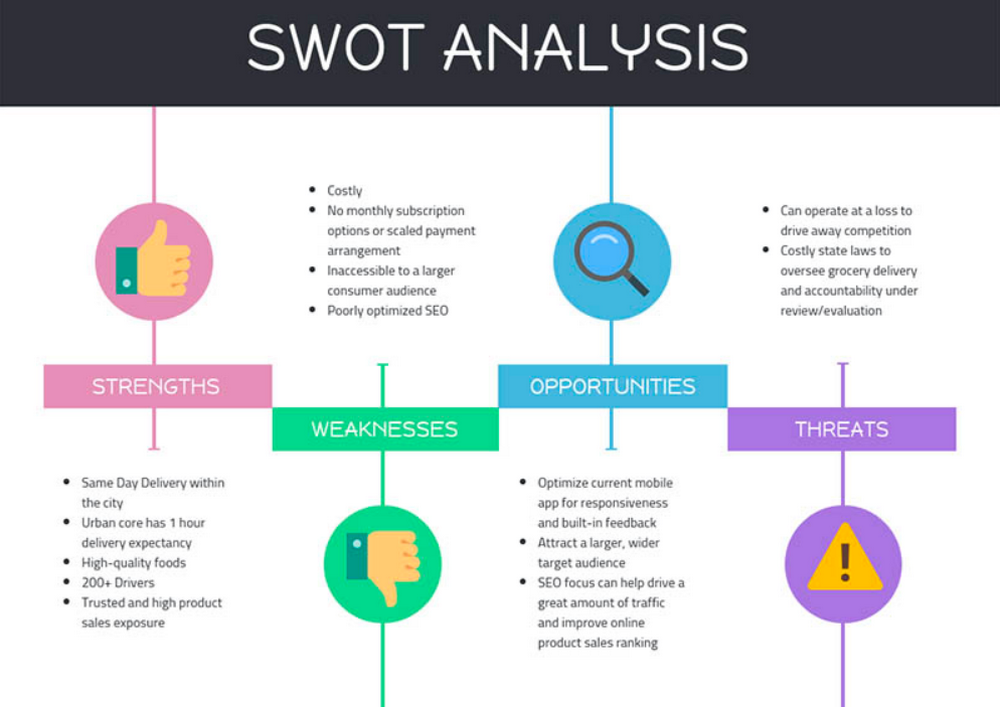Introduction
Do you know that there are 500,000 brands worldwide? According to Nielsen Media Research, half a million companies serve two thousand product categories that cover all niches. Every sector has tough competition, causing about 90% of startups to fail.
To make matters worse, according to the US Business Formation Statistics (BFS), the amount of new business application filings constantly grows. Competition gets more challenging each year, making it harder to succeed.
So, what to do? How do you start your business and emerge victorious? The good news is that your company always has a chance if you make the right decisions. One of the most vital decisions companies must take is to perform a competitive brand analysis.
What is it? Why is it important? How is it done? We are going to address these questions in this guide.
However, before jumping into the basics, it is crucial to note that even well-established companies must do brand competitive analysis from time to time. The thorough revision process helps mature companies stay afloat and secure their current position in the market despite the fluctuations and newcomers.
According to studies, successful businesses conduct competitor analysis once a year, with some performing it on a smaller level every quarter.
Defining Competitive Analysis
What Is a Competitive Brand Analysis?
Competitive brand analysis discovers whether the company does well in the arena compared to its rivals.
On the one hand, it dives deeper into the company's current position in the market, learns strengths and weaknesses, evaluates current marketing strategies, and uncovers the company's areas that require revision and improvement. It exposes trends the company needs to get ahead of and industry standards that must be met.
On the other hand, competitive brand analysis closely examines the market landscape and its prominent representatives to dig some crucial information on competitors' strengths, weaknesses, products, and marketing strategies. It also surfaces the ins and outs of how your competition works.
All these activities identify potential opportunities where the company can outperform the competition or show whether it has what it takes to enter the market and avoid a fiasco in the first year.
Brand competitor analysis is a general term that includes numerous activities and research. Companies may focus on just one specific aspect of the market or, on the contrary, do a thorough high-level analysis trying to inspect as many aspects as possible and evaluate as many competitors as possible.
Some businesses analyze SWOT, while others prefer to examine the customer journey map and develop a growth-share matrix.
Depending on the company's current situation, marketing goals, and budget, the aim of the brand competitive analysis varies.
The important thing is, whatever option the company finds appropriate, the well-done brand analysis should provide it with a complete understanding of the market landscape crucial to making informed decisions and improving the company's overall situation to keep growing and secure its position.
Importance of Competitor Analysis
If you believe that a competitive brand analysis is a quick overview of rivals' websites in the niche and social media presence, you are missing out on a large amount of data that uncovers weaknesses and strengths necessary to help a brand grow and succeed.
Competitor analysis is crucial for successful brand growth. It needs to be done at the early stage of the company's development to see whether it has a solid chance to fight the competition and become a valid player in the arena and when the company experiences one of these situations:
- It is moving forward slower than it wants or needs.
- It stagnates for a certain period.
- It sees a decline in sales and overall brand engagement.
- The competitors poach the company's ideal or loyal clients.
The importance of brand competitive analysis sometimes needs to be more evident. Many startups blindly believe in the immediate success of their unique products. However, whatever niche they serve, they should never forget that they will face tough competition.
Even if a sector is underserved, it does not mean customers will get to them and buy their products. Many factors influence the decision-making process, starting with loyalty and ending with reasonable prices.
Therefore, it is crucial to know your competitors' strengths and weaknesses, what they offer, and how they deliver their message and communicate with the audience. This knowledge underlies a solid foundation for making your products, marketing strategy and brand identity stand out. It gives relevant data to competitively set prices and develop initiatives to respond to rival marketing campaigns.
There is more. The thorough analysis offers unique insights on how to develop marketing strategies that not only forward business by improving performance but, most importantly, take advantage of your competitors' weaknesses.
Some of this research can even be ground-breaking by uncovering hidden opportunities to connect with the audience and market your products or services at another level.
The Benefits of Brand Competitive Analysis
Based on real-time data and the competitor's in-depth research, brand competitor analysis is a vital intelligence that exposes strengths, weaknesses, and strategic development areas. The benefits of it are enormous.
First and foremost, the well-done brand competitive analysis gives you accurate information on separating your brand from the competition by fine-tuning and developing your unique selling proposition.
Second, it gives insights into crucial improvements to keep up with the mainstream and audience's expectations. Whether the market craves a new feature in your service or needs to level up your email marketing campaigns because your audience favors this communication channel, it will surface this information.
Third, it helps well-established companies stay afloat and secure their position by providing a mechanism to build a solid business strategy. Revisiting your competition landscape once or twice a year saves businesses from potential threats and even the aftermath of unexpected issues and failure to meet new market anticipations.
Fourth, it helps establish an accurate brand benchmark for measuring a company's growth and success.
Fifth, it paints a larger picture of upcoming trends in the market and workplace culture. Your employees are the foundation of products and the brand's success. It is vital to meet industry standards to fetch talents and professionals to improve the company's performance across all departments and verticals.
Finally, it reinforces brand identity from different angles. The knowledge provided by analysis helps build loyalty, strengthens the brand's positioning, and improves its overall image and perception, making it a strong player in the niche.
Objectives of Competitive Brand Analysis
The key benefit of a brand competitive analysis is that it can be applied to all types of businesses and niches. Its aim varies depending on current trends, unique brand identity, company age, and market landscape specificity.
Startups use competitive brand analysis to see whether they can survive the first several years of turbulence and earn the right spot in the niche. At the same time, well-established companies use it to dig for information to create robust strategies to stay ahead of their competitors or expand business in a new market.
As a rule, competitive brand analysis can be conducted to define similarities and differences between a company and leading competitors, surface strengths and weaknesses of the brand and main rivals, expose tendencies in the audience's preferences, and much more. However, most often, it is done to achieve these three goals.
Define Brand's Competitive Advantage
This is the most popular objective of the process. There are no surprises here because when you research your competitors, you see where your organization stands against them. The deeper you go, the more you understand your products and offerings and the more precise your position becomes.
By comparing such crucial factors as product features, benefits, value, and price, you get real insights into your company's advantages over others and ways to use them to reinforce your position in the market.
Understand Competitors Strategies
Once you study competitors' marketing and social media activities, you come to know their strategies. Not only do you get an opportunity to explore it and define its strengths and weaknesses to improve your campaigns, but most importantly, you have a solid chance to forecast their next moves. This unique knowledge lets you stay on top of the market and respond with initiatives that will beat the competition.
Decide on Your Next Move
Thorough research on the market provides brands with a wealth of helpful information. It surfaces customer sentiments, differentiators, trends, and strategies.
Everything boils down to the move the company should take next. The good news is, if the aim is set right, brand competitive analysis provides everything a business needs to make an informed decision and secure its position and advantage over others. It helps select the right strategy and short- and long-term goals for businesses to move forward effectively.
Key Steps of Comprehensive Competitive Brand Analysis
The competitive brand analysis includes numerous steps. However, it starts with the basics: recognizing direct and indirect competitors.
Step 1 - Recognize Competitors
Every competitive brand analysis starts with recognizing competitors. After all, the whole process is centered around them.
So, the first step is to decide on your primary contestants. You already know your main rivals in the market and keep an eye on them so as not to miss significant strategy activities and initiatives. However, you need to clear your mind and focus on direct competitors. They are companies that meet these three main criteria:
- They offer the same service or products that solve the same problem.
- They serve the same target audience and have the same ideal customer.
- They operate in the exact location.
The next step is to determine your secondary competition. As a rule, these companies have similar products but target other market segments or solve another problem.
Finally, list indirect competitors. These are companies that have the potential to become your direct rivals.
Step 2 - Evaluate Competitor Geography
If your company does not serve clients globally, the geography of your competitors' activities is the entire World; you need to determine market concentration areas.
Measuring the combined market share of all the top firms in the industry provides a wealth of helpful information. First of all, it ascertains whether an industry is competitive or not. Second, it defines the type of competition, whether oligopoly or monopolistic. Third, it highlights critical industry rivals. Fourth, it determines business power in setting prices and quantities in the exact market segment.
Finally, market concentration is affected by numerous factors, such as barriers to entry, industry size and age, product differentiation, human capital requirements, etc. Understanding them provides the company with a solid ground for making informed decisions.
Step 3 - Examine Competitor Products or Services
Examining competitor's products or services is an excellent place to start your close acquaintance with rivals. You need to analyze the quality and features of products and carefully examine the complete product line to understand the differentiation potential.
You need to locate details about four crucial aspects of every competitor: product, price, place, and promotion. These four are also known as "the four Ps" of marketing. You need to take notes of product features that meet market needs, pricing policy, places where customers find products (website or social media), and ways the company advertises products.
Step 4 - Google Search
Identifying and inspecting the presence of your competition in organic search is one of the main steps done by SEO specialists when they do their part in brand competitive analyses.
Using Google search and some professional tools like Ahrefs or Semrush, they examine brands that target the exact SEO keywords to understand how powerful each competitor is in search engines.
As a rule, they start with analyzing digital content because it competes with you in Google's search results. Then, they move to competitor-related news – this uncovers partnerships and rivals' interactions with other platforms. In the end, they explore customer reviews.
Step 5 - Google Advertising Analysis
Working with Google continues beyond analyzing competitors' organic traffic and Internet presence. It keeps going. At the next stage, companies employ one of the most potent instruments provided by Google itself, the Google Analytics platform.
Although it is the most comprehensive and accurate tool for your traffic, with some third-party tools (like Semrush's Traffic Analytics) or experts at your hand, it may become a source of reliable inside information.
For instance, you may analyze the effectiveness of a rival's advertising campaigns by searching online marketing efforts of competitors based on keywords or exploring their website traffic. You may get insights into how people found their sites and how they explored them.
Step 6 - Online Information Field Monitoring
As a rule, the mentioned monitoring tools are primarily used to learn what people love about products and brands. This helps to improve communication, upgrade product features, and find happy customers to turn them into ambassadors. However, there is another side of the coin.
They can be used to monitor competitor mentions and ipso facto discover discussions conducted about their businesses, get marketing insights, and compare your buzz and sentiment with leading competitors.
Brand24 and Mention are among the most powerful and popular tools in the niche that even non-tech-savvy business owners may use to nail this stage.
Step 7 - Information and Feedback Monitoring
Tracking and collecting reviews, comments, and opinions about competitors across social media and web platforms helps assess competitors' marketing campaigns and strategy performances, as well as their brand development and reputation.
Visualizing the behavior and opinions of the crowd draws the overall picture of the market landscape and, most importantly, provides knowledge crucial to making necessary changes to your work.
It ensures the high effectiveness of various factors of the company's existence, from positioning in the market to email marketing.
Step 8 - Industry Media Insights
For many reasons, staying up-to-date with industry trends and spotting any technological advancement earlier is essential. However, this becomes even more crucial during brand competitive analysis because it unveils information that may become your competitive advantage.
Being open to new ideas and approaches helps the company stay ahead of the curve, anticipate changes, and take proactive steps.
During this stage, companies must investigate trade publications and analyze their rivals' tools used to run campaigns and realize strategies. Sometimes, industry trends need to be more evident. Therefore, it is important to revisit this stage regularly.
Step 9 - Competitor SEO Tactics
Researching and analyzing competitor SEO tactics is the catalyst for identifying and adopting new strategies for your company based on real-time data. It gives insights on improving the online visibility of brands and products and optimum website positioning in the digital expanses to increase bottom-line results.
SEO analysis centers around the investigation of keyword use and content performance. You may start by glancing at the SERPs for your keywords. Then, dive a little bit deeper to learn more about your rivals. It also helps to look at the technical aspects of your competitor's online estates.
Believe it or not, even such minor details as fast page loading speed ensured by the latest plugin may make a huge difference in ranking in Google, driving user engagement, and generating leads.
Step 10 - Social Media Analysis
Observing your competitors' activity, audience interaction, and posting frequency across social media platforms reveals trends, brand sentiment, and value perception. With deep analysis and regular tracking, this trio provides knowledge about rivals' essentials of their campaigns in popular communication channels.
In general, during brand competitive analysis, companies may conduct several types of social media monitoring and analyzing: performance of social media efforts (this includes impressions, likes, shares, views, etc.), audience analytics (this includes gender, location, type of device in use, etc.), paid ads analytics (this includes number of active ads), influencer analysis (this includes number of posts, audience size, etc.) and sentiment analysis.
Depending on the goal and specificity of the competitive landscape, companies need to decide what activities they need to prioritize and examine in the first place.
Step 11 - Sentiment Analysis
Sentiment analysis is a significant segment of social media analysis. At its core, it implies measuring brand perception by analyzing mentions and sentiment. The procedure decides if the information is good, pessimistic, or impartial based on text. As a rule, AI and NLP do that.
The goal of sentiment analysis is to check the brand's identity, product, and current campaign opinion in customer feedback to understand customer needs and expectations. It discovers invaluable information that improves your product and interactions with the target audience.
Step 12 - Social Media Campaign Reach
Social media campaign reach is a metric that evaluates campaign effectiveness and share of voice. It measures the number of unique people that saw ads or social media content. In other words, it discovers the potential customers a campaign could reach.
As a top-of-funnel social media metric, it uncovers some crucial information for creating and running successful marketing campaigns on social media platforms. Taking this information from your competition gives you a head start. It allows you to channel efforts in the right direction by prioritizing things that find a response with your target audience.
Step 13 - Track Influencers
Whatever outstanding brand identity you have, collaborating with influencers can quickly level up the game. This partnership creates online buzz, strengthens the brand's reputation, and increases audience engagement.
Marketers and businesses across all niches recognize the importance of this type of social media marketing and use it to their advantage.
Chances are, your competitors already use it to their advantage. So why not see how they do it to get valid insights on what campaigns and influencers resonate the best with the target audience?
You may learn some lessons and get good leads with whom you can collaborate to increase your social media reach and enjoy the benefits of influencer marketing.
However, remember that influencer marketing is a dynamic and evolving field. Therefore, this segment of brand competitive analysis needs to be done regularly.
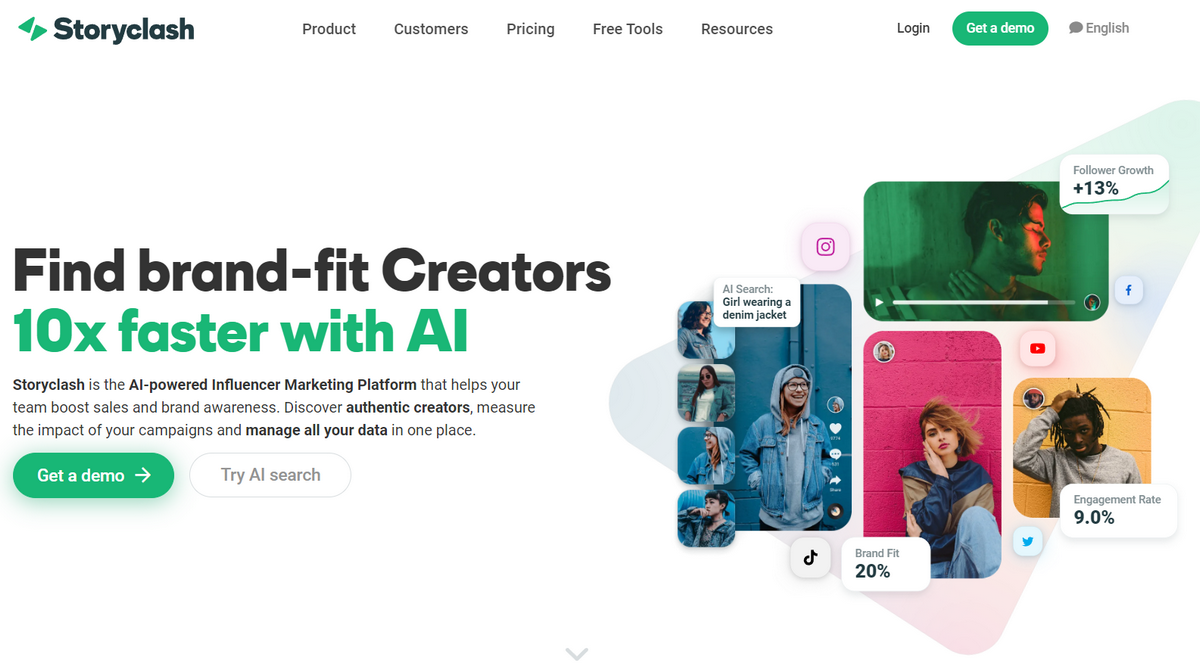
Storyclash – AI tool for tracking influencer marketing efforts
Step 14 - Assess Customer Support
Customer support and other customer-facing positions are the areas where it is the easiest to see what your competitors offer to the target audience regarding addressing issues with their brands, products, and services.
On top of that, there is a direct link between customer service and business performance. Therefore, evaluating support availability and efficiency is essential.
This stage provides information about what the company could be doing wrong or right to improve its interactions with the audience.
Step 15 - Analyze Mention Catalysts
Catalyst analysis means testing the catalyst to see whether it meets specifications and is likely to perform as intended. It is a science term; however, it has found its rightful place in brand competitive analysis. The deal is that a catalyst can be anything. In marketing, it can be an event or any factor that drives competitor mentions, increasing overall engagement and escalating conversions.
Therefore, it is crucial to determine these events and factors to see whether you can benefit from them and what ways help to work them into your campaign and strategy.
Step 16 - Customer Acquisition Methods
Customer acquisition is the process that consists of three primary stages: attracting, engaging, and converting prospective customers into leads. It is the core of every campaign and strategy. Understanding competitor's client attraction strategies provides unique information on how they generate these leads. It also gives a better understanding of how people discover their brands and why they buy from them.
This knowledge will help you improve the customer journey and employ some tricks and tools to make this process more productive and cost-effective.
Step 17 - Pricing Analysis
Pricing analysis underlies a foundation for a competitive pricing process. A company strategically selects and optimizes price points for its services based on competitor pricing in the market segment. This helps avoid lost profits, improve pricing, and increase revenue with proper price match.
Focusing on your primary rivals and using professional tools is crucial when comparing competitor pricing structures because they provide the most comprehensive report on the case. These tools will help you understand your rival's price and give information to create your data-driven pricing strategies.
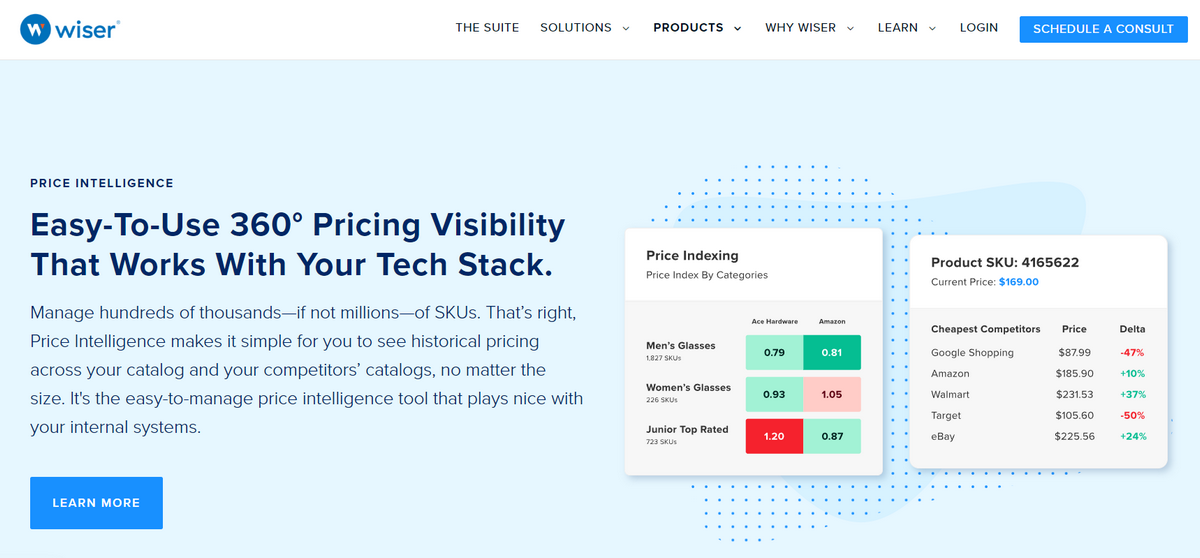
Wiser – tool for pricing analysis
Step 18 - Offer Analysis
Offer analysis identifies areas where your market is underserved. It discovers gaps that your company could fill in. This way, you can make the first move and satisfy those unmet customer needs.
On the other hand, when analyzing offerings, you may uncover marketing strategies for providing complimentary gifts or samples on competitor sites. These campaigns can be timed to specific events or done during the idle season. Again, you may uncover information to make the first move and meet customer's expectations while others are hesitant.
Step 19 - Delivery Cost Analysis
Delivery cost is not just one of several features of the product. It results from a modeling process that thoroughly analyzes the market and the customer's potential to pay.
Analyzing rivals' shipping rates is like diving into this modeling process. It helps optimize your internal and external service delivery strategy to become competitive in the market. It gives the knowledge to make the right decisions to improve profitability and, at the same time, align your resources with your value proposition.
Step 20 - Technology Exploration
Like it or not, technology lies at the core of modern marketing. Whatever you do, whatever campaigns you want to run, these tools will assist you in all your steps. From planning to analyzing the results, there is a whole bunch of digital assistants that forward business and save them not only time but also money.
According to recent surveys, you need help finding a business that does everything manually. Everyone enjoys the benefits of technological advancement. Therefore, it is crucial to determine what competitors use to identify potentially better-performing platforms for your company.
Step 21 - SWOT Analysis
SWOT analysis is a study done by the company to identify its strengths, weaknesses, opportunities, and threats. Thorough research of internal and external aspects gives visibility into the company's current status and measures overall business performance.
It offers numerous benefits: it identifies areas that need improvement, understands the market and competitors, predicts changes, and provides real-time data for accurate decisions.
The SWOT analysis can be conducted on your own by using predefined templates. However, you can best delegate this stage to a professional brand agency because its team will surface some hidden opportunities and threats that only experienced specialists can spot.
Step 22 - Customer Experience Evaluation
Although brands get increasingly creative for drawing public attention, an oldie-but-goodie customer experience still stays in the lead when it comes to driving engagement.
According to studies, positive customer experience has one of the most significant impacts on a brand's success. It promotes loyalty, retains customers, and encourages brand advocacy.
Therefore, it is essential to compare and contrast this aspect with competitors. This way, you will identify ways to improve your interactions across touchpoints and choose the model that best suits your market.
Brand Competitor Analysis Tools
Brand competitive analysis is only possible with reliable and professional instruments. In today's overcrowded and overserved market, with audience preferences changing constantly, they are indispensable. We have already mentioned several professional tools in the previous section. However, we advise you to look at these three instruments that are the main pillars of the process.
1. Ahrefs
Ahrefs is a staple competitor analysis tool used by millions of SEO specialists across the Globe. It estimates how much traffic a competitor receives on specified keywords, determines the site's highest-performing content based on backlinks, and identifies keywords that bring in the most traffic to a competing site. Check it out to see what else it can do.
2. Sprout Social
Sprout Social is a time-proven platform for analyzing social media. It reveals competitor's performance from multiple angles and data points across three goliaths of the industry: Facebook, Twitter, and Instagram. It does all tedious research, gets a sneak peek at competitor's activities, and spots trends.
3. Crayon
Crayon is an AI-powered platform that does all the heavy lifting in streamlining the process for companies and clarifying their vision of the market landscape. It creates a comprehensive yet easy-to-handle dashboard to track compiled competitor updates so a team can easily spot trends and tendencies.
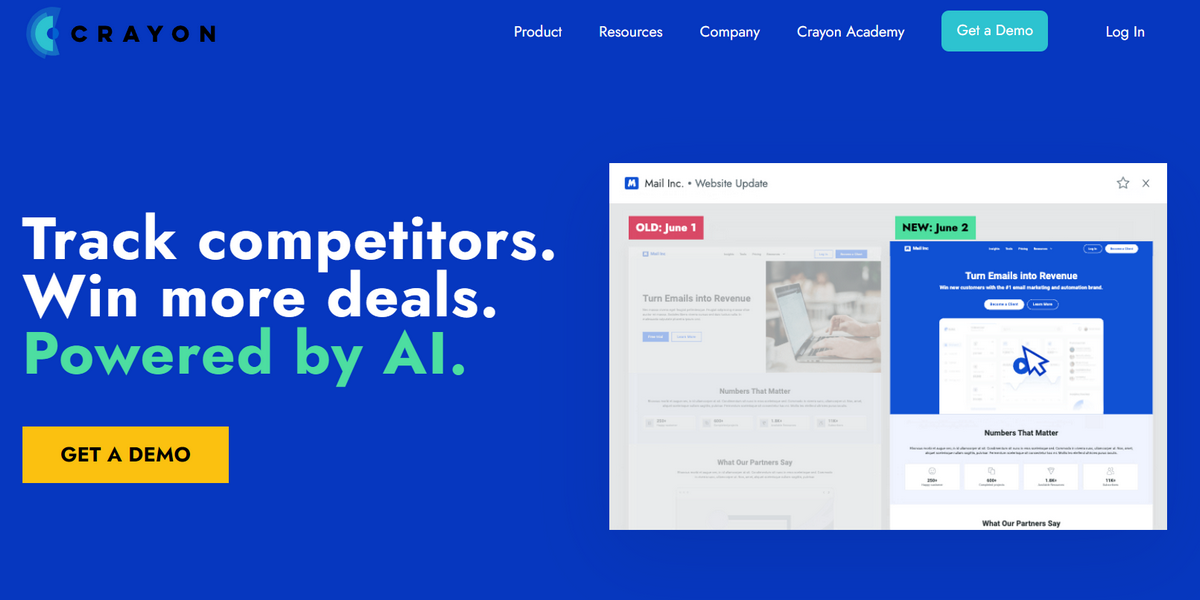
The Post-Analysis Stage
The end of brand competitive analysis marks the beginning of the company's actions. The time has come to build a strategy based on relevant data, insights, and trends and take the right move to beat the competition and reinforce its position in the market.
As a rule, the post-analysis stage implies that companies decide on ways to differentiate products and company against others, position products and services according to their advantage, and come up with a strategy that responds with corresponding initiatives to the next moves of the rivals.
To make this stage prolific, it is crucial to understand the market position and ways to improve it. You need to develop a competitive strategy that will underlie brand decisions in essential areas, such as product quality and features, pricing, customer-facing services, communication channels, distribution channels, and other specific ones to the niche, like packaging, shipping, and partnering.
Depending on the goal and current situation in the market, brands may position their products directly against the competitors or place them away from the rivals. They may capitalize on the product's features or focus on its category.
They may also center strategy and campaign around product usage occasions or prioritize a specific characteristic of a consumer to meet their preferences with the product.
How a brand will move and fight competition largely relies on the results of brand competitive analysis.
Doing brand competitive analysis regularly, at least once a year, is highly recommended.
The main reason is that it recognizes how you can enhance your business strategy in the current state of the market, the competition landscape, and the target audience's preferences. It brings your company back on track and lets you effectively respond to trends and fluctuations in the market.
Conclusion
Brand competitive analysis is critical for startups and well-established companies regardless of niche and target audience. Not only does it provide knowledge to match competitors and stay afloat, but most importantly, it gives everything companies need to get an edge and overcome rivals, thereby emerging victorious.
The analysis is a complex process that dives deeper into multiple areas. From tracking social media to doing SWOT, it researches all aspects of competitors' existence in the market. Using professional instruments or collaborating with a branding agency during this process is highly recommended to make the most out of it.
Oct 19, 2023
